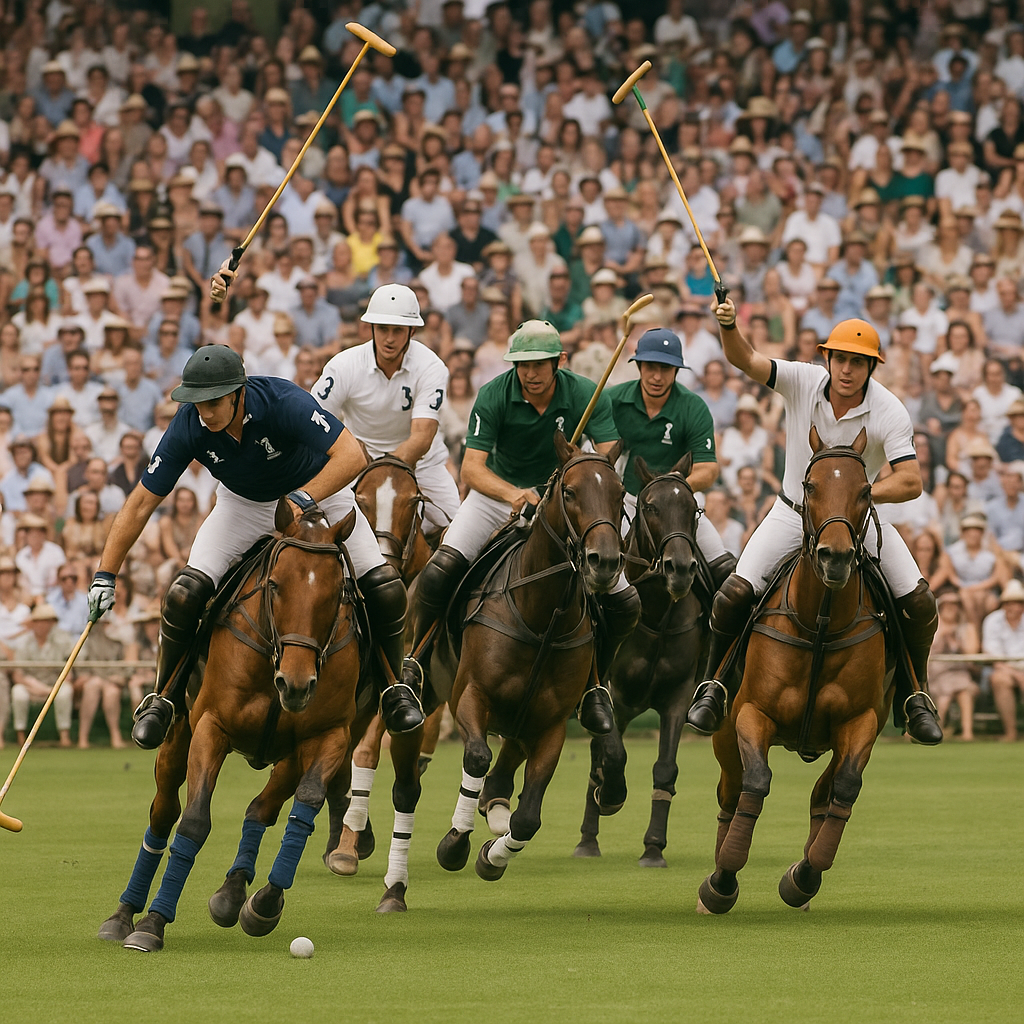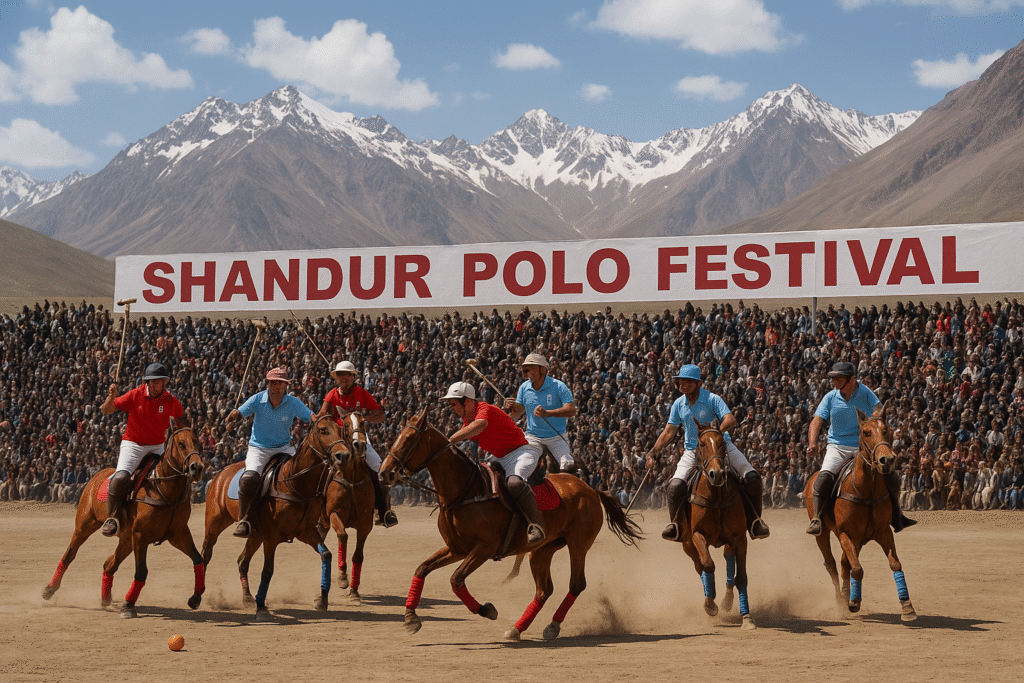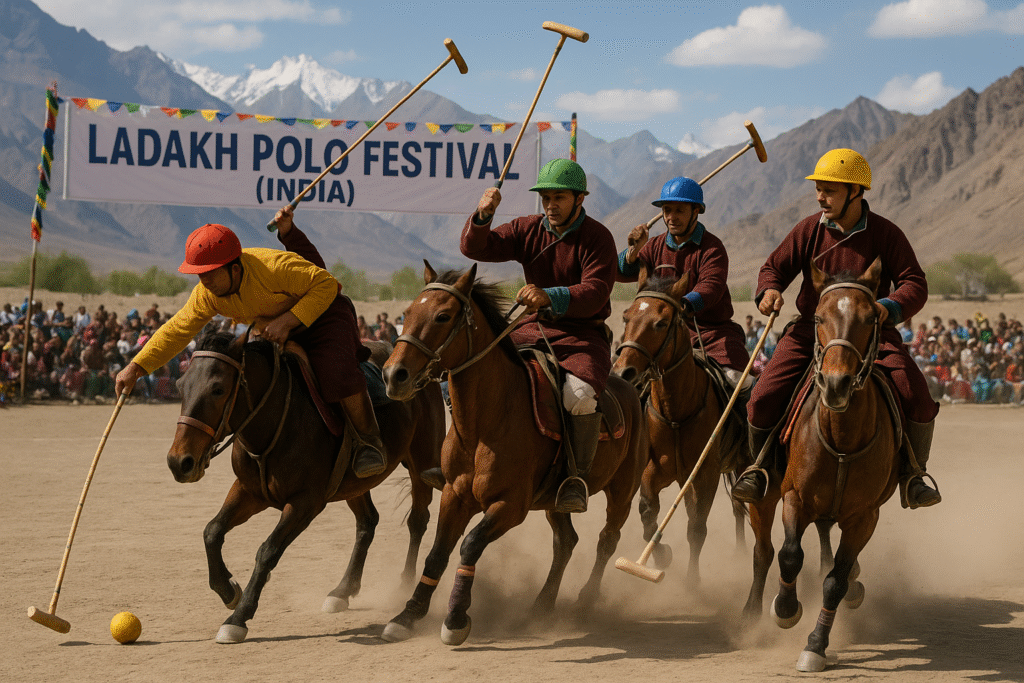The equestrian game of polo is played on horseback by two opposing teams of riders who try to drive a small ball through the opponent’s goal with long-handled mallets Often called the Sport of Kings, polo has ancient roots in Persia and Central Asia dating back over 2,000 years. Each match usually lasts one to two hours, divided into several periods called chukkas or chukkers. Today the sport is popular worldwide, with well over 100 national polo associations and clubs across the globeen.wikipedia.org.

History of Polo
Polo originated in Central Asia and Persia, where it was known as chovgan. Scholars believe it began as an exercise to train cavalry for nobility around the 6th century BC. The Persian word chovgan meant “ball” and gave rise to the English name polo. Over centuries, this mounted ball game spread across Asia – from the courts of Byzantium to Tibet, China and Indiaen.wikipedia.org. Even today, the traditional games of Central Asia and the Caucasus (like Azerbaijan’s chovqan) reflect this heritage.
Rules and Gameplay of Polo
- Teams and field: Each side fields four riders (three players in arena competitions)en.wikipedia.org. Matches are played on a large grass field or in a smaller enclosed arena.
- Objective and scoring: Players use a long-handled mallet to strike the ball through the opposing goal posts for a pointen.wikipedia.org. The team with more goals at the end wins.
- Game format: A full-length outdoor match lasts about 1–2 hours, divided into 4–8 periods (chukkas) of 7 minutes eachen.wikipedia.org, with a short break between each. Players typically change horses between chukkas to rest their mounts.
- Player roles: Teams may be all-male, all-female, or mixeden.wikipedia.org. There are no substitutions mid-chukka, so each player’s string of ponies is vital to cover their team’s needs.
- Rules and fouls: Play is almost continuous; it is only paused for fouls or equipment issuesen.wikipedia.org. Dangerous actions (like reckless striking or crossing) are penalized to protect riders and horses.
You can read about Tennis Scoring
Polo Ponies and Equipment
- Ponies (horses): Riders use specially trained horses selected for speed, stamina and agility. These mounts are typically 14.2–16 hands high (about 150–160 cm) and 900–1,100 pounds. A pony’s temperament is critical, and a well-trained horse can contribute greatly to a player’s successen.wikipedia.org. Players usually keep several horses (a “string of ponies”) and switch mounts between chukkas.
- Mallet and ball: Each player carries a long wooden mallet (roughly 4–5 feet in length) to strike a small, hard ballen.wikipedia.org. The ball (made of plastic or wood) is about 3 inches in diameter. Mallets have grips and flexible shafts for powerful yet controlled swings.
- Protective gear: For safety, all riders wear helmets (often with faceguards), knee pads, and sturdy riding bootsen.wikipedia.org. Mouthguards and gloves are also common. Jerseys or shirts distinguish the teams, and some players use elbow or neck guards in high-level matches.
International Polo Competitions
The sport’s international federation (FIP) is officially recognized by the IOC. Clubs in over 100 countries play the game today. FIP organizes a World Championship for national teams every three to four years. Polo was also part of the Olympic program through 1936en.wikipedia.org.
At the club level, one of the oldest and richest tournaments is Argentina’s Palermo Open (Campeonato Argentino Abierto), held in Buenos Aires since 1893en.wikipedia.org. Other major events include the U.S. Open (Florida) and the Cartier Queen’s Cup (England), which attract the world’s top teams.
You can also read about Gymnastics
Polo Festivals Around the World
Shandur Polo Festival (Pakistan)
Each July at Shandur Top (around 3,700m elevation) in northern Pakistan, teams from Gilgit and Chitral face off in traditional equestrian matches. The Shandur festival is famed for its remote mountain setting – Shandur Top is one of the world’s highest-altitude playing fields. The event includes music, dance and a village camp where locals and visitors gather to celebrate the sporten.wikipedia.org.

Ladakh Polo Festival (India)
Ladakh’s high-altitude equestrian tradition dates back to the 17th century, when polo was introduced by the royal family of Baltistanen.wikipedia.org. Today the region hosts an annual summer tournament (around July) featuring teams from Ladakhi villages. Players wear traditional dress, and the games are accompanied by local music and ceremonies that celebrate the area’s heritage and mountain culture.

Other Notable Polo Festivals
Many international events highlight polo’s global appeal. Each winter the Swiss resort of St. Moritz hosts a famous snow tournament on a frozen lake. A similar snowy event is held annually in Aspen, Colorado. In warmer regions, beach tournaments are organized on sandy shores (for example in Florida or California). Even non-traditional versions occur: some Central Asian festivals feature camel polo games. These diverse events show how the sport adapts to different cultures and landscapes.
Polo’s Enduring Legacy
Today the sport is played in more than 100 countriesen.wikipedia.org, with clubs and youth programs keeping the tradition alive. Its emphasis on horsemanship and teamwork continues to attract participants worldwide. From the rugged mountain tournaments of Pakistan to the snow fields of Switzerland and the sandy beaches of Florida, the game links ancient tradition with modern sport.
References: Key facts are drawn from sports and historical sources on poloen.wikipedia.orgen.wikipedia.orgen.wikipedia.orgen.wikipedia.orgen.wikipedia.orgen.wikipedia.orgen.wikipedia.orgen.wikipedia.orgen.wikipedia.org.
